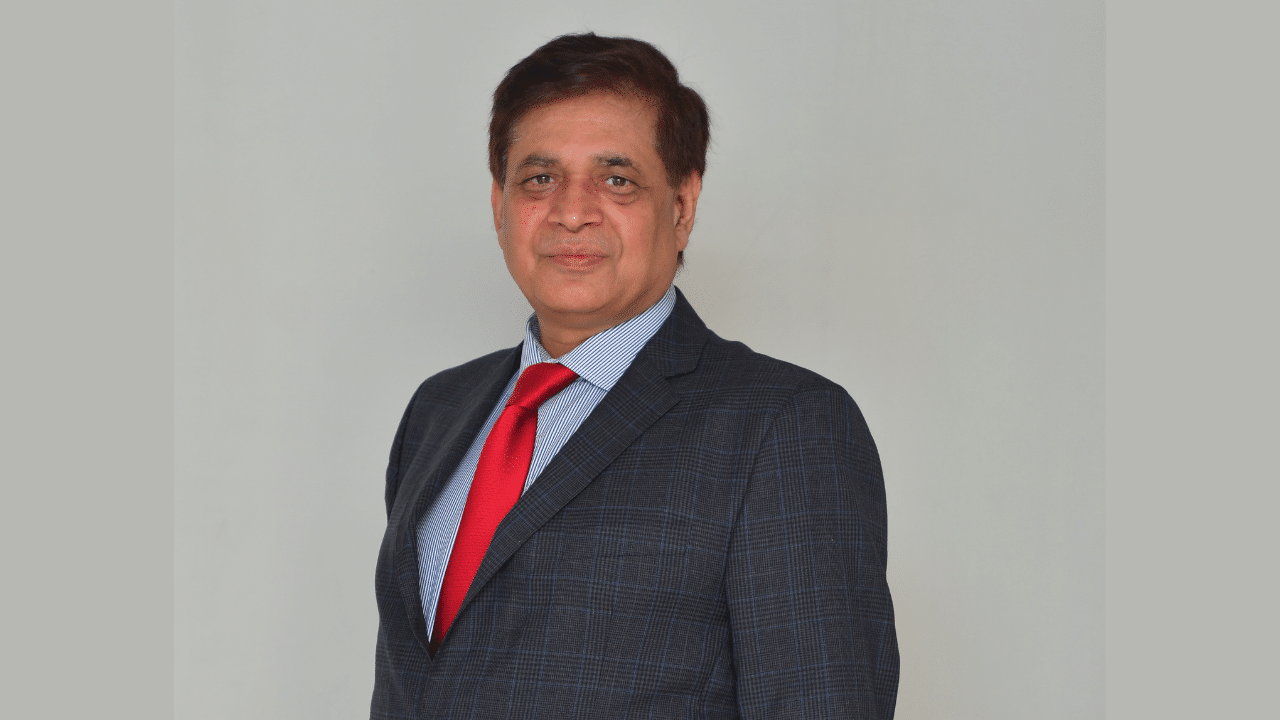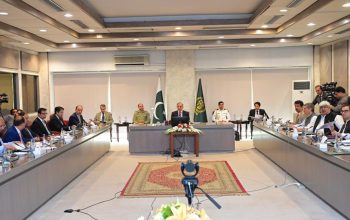Pakistan’s economy is now in a steady state of recovery from the unprecedented financial consequences of the COVID-19 pandemic. With encouraging developments on the horizon, the government has taken the lead and has been launching several micro-initiatives geared towards empowering the underserved and most vulnerable segments of the population, who have borne the brunt of the economic challenges posed by the pandemic in Pakistan.
To get a closer look at the role microfinance institutions are playing in rebuilding the economy and enhancing its positive influence over time, ProPakistani spoke with Ghazanfar Azzam – President & CEO of Mobilink Microfinance Bank, one of the most prominent players in the industry, about the programs, processes and operational initiatives that can help contribute to growth, prosperity and financial inclusion nationwide. Here is how the conversation went:
How has the State Bank of Pakistan (SBP) facilitated the microfinance environment of Pakistan? What are the major roadblocks to digital financial inclusion?
Microfinance banks in Pakistan have been able to perform as significant contributors to the national economy with the help of the Microfinance Institutions (MFIs) Ordinance 2001 put forth by SBP. This ordinance spearheaded the empowerment of MFIs in Pakistan, gave investors the confidence they needed, and allowed clear operational segregation between microfinance and commercial banks.
The role of SBP in facilitating branchless banking through its ‘Branchless Banking Regulations’ is particularly commendable because it allowed MFIs and banks to incorporate financial technology in their operations and offer easier, more convenient products and services to their ever-growing customer base. This allowed MMBL to launch its branchless banking digital solution which is now serving over 31 million registered users across the country.
Despite all these insightful boosters paving the way for a financially empowered Pakistan, the greatest obstacle remains our populations’ general lack of financial and digital literacy. Our customers have little to no trust in digital avenues and rely heavily on cash-based transactions in their daily lives. With the recent surge in our digital wallets, however, I feel confident that a digitally empowered and financially inclusive Pakistan is not entirely out of reach.
How has MMBL worked to incorporate SBP’s recent draft policy on ‘Banking on Equality’ which emphasizes women’s financial inclusion? What are the steps that the organization is taking to foster women empowerment, particularly on the entrepreneurial front?
The endorsement of SBP’s ‘Banking on Equality’ policy is integral to the growth of Pakistan’s financial industry since women remain excluded from the majority of the country’s economic activities. At MMBL, enhancing female financial inclusion is of prime importance because we believe that no sustainable economic progress can be made by leaving 49% of a nation’s population behind.
We aim to provide a level playing field for all through consistent encouragement of women from all socio-economic backgrounds so they may feel comfortable coming forward and taking the financial reins to drive Pakistan towards true prosperity. Over time, we have introduced several initiatives and policies that ensure a gender-inclusive culture at MMBL, internally as well as externally.
Delivering on our commitment to the promotion of female financial inclusion, MMBL has recently launched yet another strategic program – Women Inspirational Network (WIN) – that aims to further strengthen the base to enhance gender parity across the board and encourage female entrepreneurs through female-centric product offerings that will not only diversify our portfolio but cater to the unique financial needs of the Pakistani woman.
The bank prides itself on its operational alignment with SBP’s ‘Banking on Equality’ draft policy and we are excited to share that over 20% of our Gross Loan Portfolio (GLP) now caters to women-owned MSMEs, a number we aim to increase more significantly over time.
COVID-19 caused massive migration to digital payments which gave fintech organizations a great opportunity to innovate and bring further ease to users. How did MMBL cash in on that opportunity?
The ongoing global pandemic has led towards a digital transformation across all sectors and made it indispensable for individuals as well as organizations to adapt to the ‘new normal’ sooner rather than later, a major part of which has meant switching towards digital, cashless payments.
I believe that all banks and government institutions, not just MMBL, have played their role to educate the masses and raise awareness about digital banking. The rapid digital shift has increased the number of digital transactions and payments not only across Pakistan, but worldwide, and this trend is not only here to stay, it is bound to gain traction over time.
What is applaudable here is the fact that the regulator & key financial as well as technological service players have managed this long-overdue digital revolution quite seamlessly.
MMBL has been steadily digitizing its products and services over time. We have incorporated biometrically enabled hand-held devices in our operations to facilitate secure payments for all our customers. We facilitate our customers through asset and liability products that employ secure digital signatures and other innovative digital solutions for convenient and secure operations.
SMEs and MSMEs have recently gained momentum in Pakistan’s economy. How do you think microfinance institutions can benefit from this momentum? What are the areas MMBL concentrates on when enabling them?
SMEs and MSMEs are critical players that enable the entrepreneurial infrastructure and help strengthen the national economy with their contribution to the Gross Domestic Product (GDP). In Pakistan, around 99% of economic establishments are SMEs that jointly contribute 40% to GDP and 26% to the exports from the manufacturing sector.
The country has approximately 3.3 million SMEs, including production units, service providers, and startups spread across the country, and these SMEs employ 78% of our non-agricultural labor force. These numbers are incredibly promising and bring the sheer impact of SMEs to light, signifying the growth that can be achieved through their empowerment. MFIs can be pivotal in enabling SMEs through a variety of financial solutions.
We are especially focused on this sector because it not only has the potential to irrevocably change Pakistan’s financial landscape but is also a key contributor to the country’s attainment of the United Nations Sustainable Development Goals (UN SDGs), particularly those centered around reducing poverty, ensuring decent work and economic growth for all.
Addressing the government’s recent focus on housing finance, what role do you think MFIs have played in this domain over the years?
Housing Finance is one of the key strategic priorities for MMBL, whereby it aims to help its customers realize the dream of having their own house. This is a particularly important step for the bank, especially as it aligns with the government’s flagship program, Naya Pakistan Housing Scheme, which aims to provide families from middle to lower socio-economic strata with low-cost financing solutions to buy or build their own homes.
Pakistan faces a backlog of over 8.5 million residential units and this figure is increasing by 200,000 units annually. The housing finance, thus, will relieve millions of families across the country from the burden of monthly rental payments and also allow them to use their freed-up financial resources for investment in business and entrepreneurial opportunities.
MMBL alone has catered to over 117 housing loans, with PKR 90 million disbursed. Currently, the bank has an active portfolio of PKR 84.2 million.
The government is also focusing on providing subsidies to make infrastructure more obtainable for low-income households and its effectiveness can be significantly enhanced when done in partnership with the private sector players. MMBL is currently offering house loans up to PKR 3,000,000.
What do you think is Pakistan’s microfinance industry’s trajectory for the next 5 years? How do you envision MMBL contributing to this space further?
The future is digital. The coming years will witness a significant boost in fintech and this trend will be taken up swiftly by microfinance banks, as evident from the sector’s performance through the recent pandemic. In Pakistan, the inclusive index for mobile use and internet accessibility is continuously on the rise with more than 84% of our population using cellular phones and over 43% having access to 3G and/or 4G services.
This indicates that the majority of Pakistanis will be able to adopt financial technology services and bank from the comfort of their homes. To keep up with this progress, it will be vital for MFIs and banks to expand their operations through the implementation of more technology-oriented customer services and improved digital ecosystems.
The post Digital Banking – Paving the Way for a Financially Inclusive Pakistan appeared first on .



